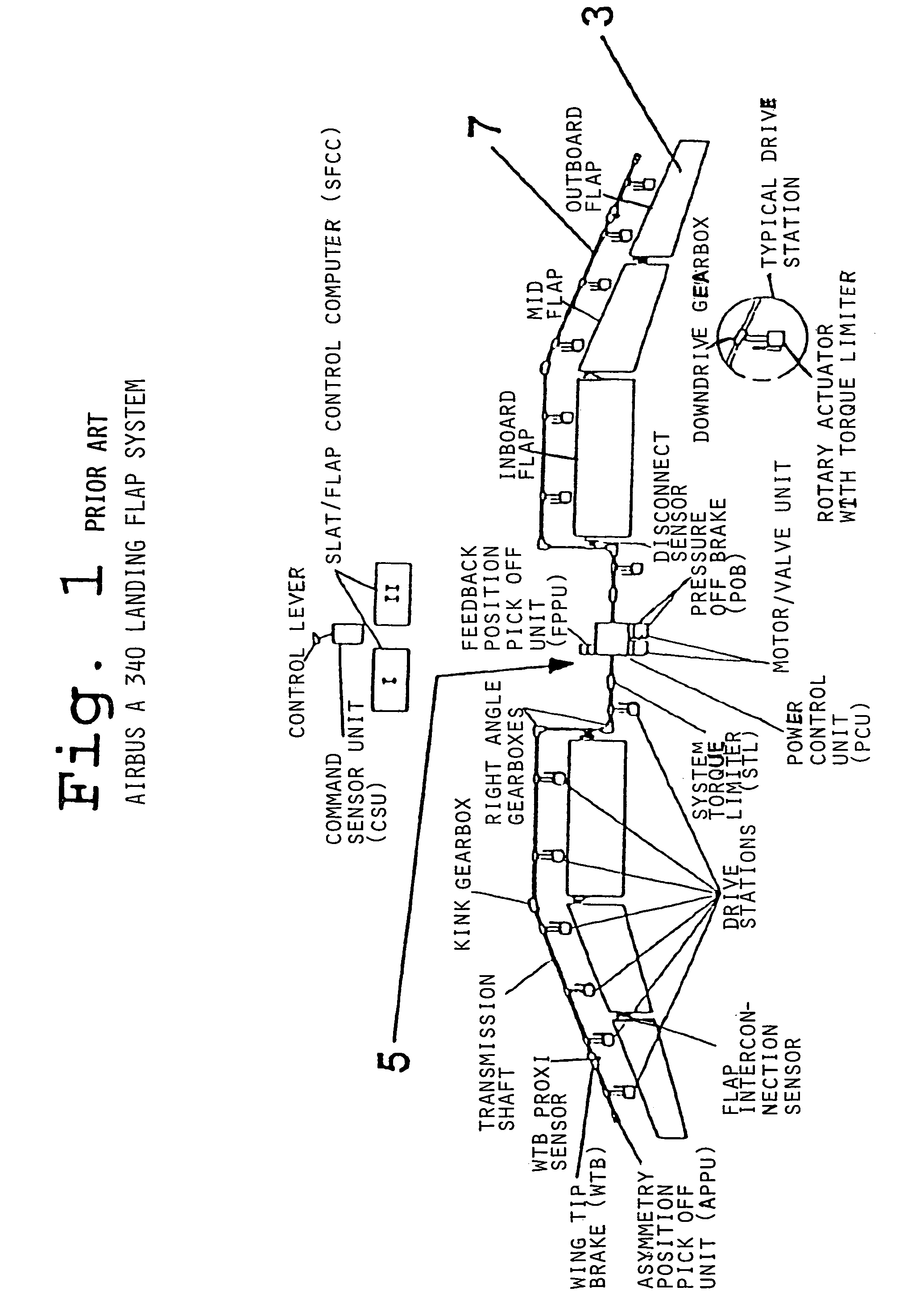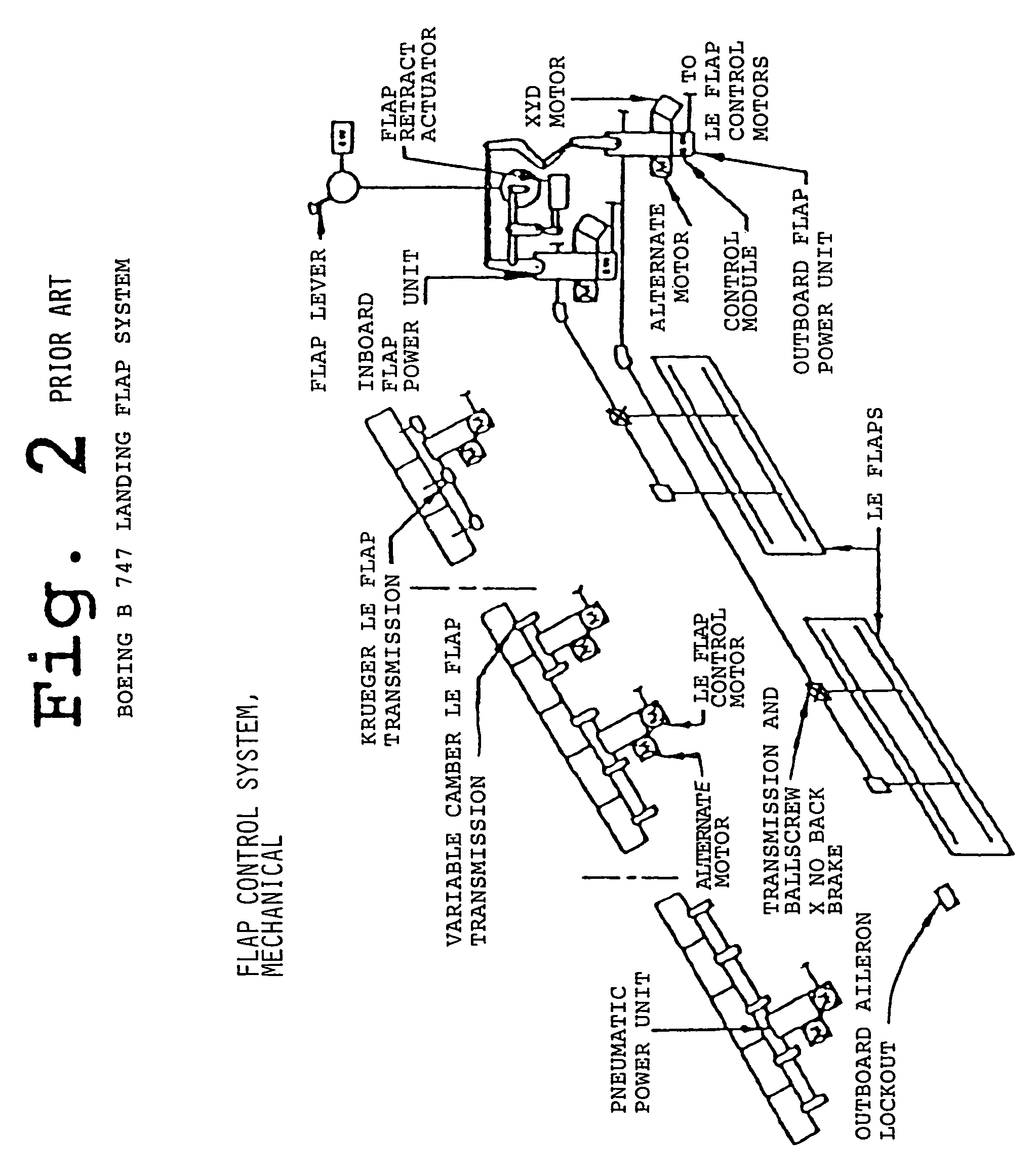Adaptive flap and slat drive system for aircraft
a technology of adaptive flaps and drive systems, which is applied in the direction of aircraft power plants, power amplification, transportation and packaging, etc., can solve the problems of high friction, high installation effort and expense, and the failure to control could have catastrophic consequences for the overall control and flight safety of the aircraft, so as to reduce the friction acting, simplify the maintenance of the flap system, and reduce the installation effort.
- Summary
- Abstract
- Description
- Claims
- Application Information
AI Technical Summary
Benefits of technology
Problems solved by technology
Method used
Image
Examples
Embodiment Construction
[0023]As discussed above, the landing flap systems of the Airbus A340 aircraft and of the Boeing B747 aircraft, as respectively schematically shown in FIGS. 1 and 2, as well as the flap systems of the DC9 and DC10 aircraft, form the general state of the art which is a starting point for the development of the present invention. Thus, these conventional flap systems are generally of interest to provide a better understanding of the invention, by particularly considering the differences between the conventional flap systems and the several example embodiments of the invention that will be discussed in detail hereinbelow.
[0024]As a general background, it must be considered that the future requirements in air traffic, for example relating to the increase in air traffic, the requirements of noise reduction, and the realization of a higher flexibility in the take-off and approach paths of airports, place ever higher demands on the functional flexibility and the availability in the event o...
PUM
 Login to View More
Login to View More Abstract
Description
Claims
Application Information
 Login to View More
Login to View More - R&D
- Intellectual Property
- Life Sciences
- Materials
- Tech Scout
- Unparalleled Data Quality
- Higher Quality Content
- 60% Fewer Hallucinations
Browse by: Latest US Patents, China's latest patents, Technical Efficacy Thesaurus, Application Domain, Technology Topic, Popular Technical Reports.
© 2025 PatSnap. All rights reserved.Legal|Privacy policy|Modern Slavery Act Transparency Statement|Sitemap|About US| Contact US: help@patsnap.com



